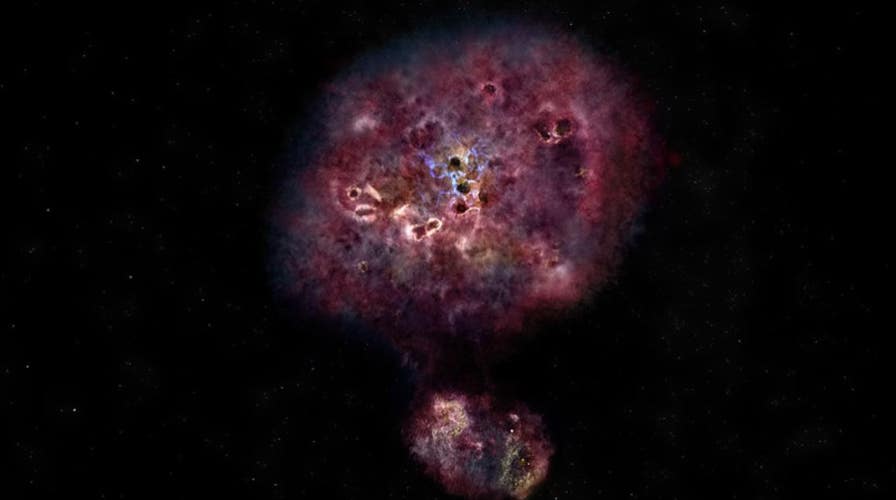Fox News Flash top headlines for Feb. 11
Fox News Flash top headlines are here. Check out what's clicking on Foxnews.com.
A huge ancient galaxy suddenly quit forming stars after making them for hundreds of millions of years, researchers report.
The galaxy, known as XMM-2599, bulked up to a mass of about 300 billion suns, according to new observations published in the Feb. 10 Astrophysical Journal Letters. That would make it three times as massive as similar galaxies from that time, which was 1.8 billion years after the Big Bang.
Researchers say the galaxy was pushing out stars at a rate of over 1,000 solar masses per year for several hundred million years.
“This paper is telling us that star formation can be very, very efficient in the early universe and equally efficiently be quenched,” Mauro Giavalisco, an astronomer at the University of Massachusetts Amherst who was not involved with this study, told Science News.
LOST CONTINENT OF ZEALANDIA TRANSFORMED BY PACIFIC'S RING OF FIRE

A very large galaxy in the early universe grew fast and then stopped forming stars. It may have resembled the massive galaxy illustrated here. (NRAO/AUI/NSF, B. Saxton) (NRAO/AUI/NSF, B. Saxton)
Galaxies tend to produce stars only for as long as they have enough cold gas to do so. Although there have been other galaxies that created many stars, none are as huge as XMM-2599.
Scientists will continue to scan the sky for similar galaxies, hoping to cofirm whether this is a "one-off weird galaxy" or something entirely different, UCLA astronomer Benjamin Forrest explained to Science News.

